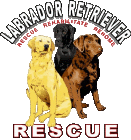Pet Theft In Our Area
Animals are stolen at an alarming rate throughout the country and sold to animal research facilities for profit. This article gives you a little history on the regulation of animals used for research purposes and how you can protect your beloved pet. Animal research is a multi-billion dollar business. Medical supply/equipment and pharmaceutical companies, paint and pesticide manufacturers, Department of Defense, medical schools, National Institutes of Health, Veterans Administration hospitals, and public and private hospitals all do research on animals. Some of the research is mandated by the Federal Government prior to devices and products entering retail markets. Other research is funded by grants or contracts from the Federal Government. In its FY96 Animal Welfare Enforcement Report, USDA states 82,000 dogs and 26,000 cats were used in research that year.
The USDA Connection
In response to reports of dogs and cats disappearing from neighborhoods at a rate of 2 million per year, Congress passed the Animal Welfare Act of 1966. This Act made the United States Department of Agriculture (USDA) responsible for enforcing the act’s standards for procurement, care, and handling dogs and cats in research. This Act, it was hoped, would stop the sale of stolen pets to animal research labs.
In response to the Act, USDA issued regulations requiring people who provide animals to research facilities to be licensed. Animal research facilities are also licensed. The department of the USDA responsible for this is the Animal and Plant Health Inspection Service (APHIS).
Some helpful definitions relating to USDA regulations and animal research procurement:
- Dealers: are persons selling regulated animals for research or teaching; wild or exotic animals in retail channels for exhibition or for pets; and domestic pet animals at the wholesale level.
- Class A Licensees: are breeders dealing only in animals they breed and raise.
- Class B Licensees: obtain their animals from random sources and include brokers, operators of dog auction sales, bunchers.
- Bunchers: are people who collect animals from random sources and sell them to Class B licensees
- Random Source: means dogs and cats obtained from animal pounds or animal shelters where permitted by local law, auction sales or from any person who did not breed and raise them.
An LRR Lab, Bubba, gets kidnapped!
In September 1997, a licensed research facility in the Baltimore, MD area issued a request for 1300 large chested Labrador retrievers through the USDA. The USDA made the request available to its licensed Class B dealers. Labrador Retrievers, Huskies, Shepherds and their mixes are considered premium dogs in the research animal business. Generally, healthy premium dogs are worth $500.00 each to the dealer, smaller dogs $150.00, and cats $100.00.
With the order in hand, the Class B dealers notify their bunchers. The bunchers collect the desired animals from random sources. Bunchers may pay local children a few dollars to find out where dogs live and whether or not they are left outside alone. The buncher may have also spent time driving around and surveying various neighborhoods for available dogs. Another random source of dogs is the “Free-To-Good-Home” ads in the local paper and on the Internet. Typically, when a buncher hits a neighborhood, all dogs of similar size or breed disappear. The buncher gets paid for each animal delivered.
Bubba is an LRR Lab. You may have seen his page on our website, Bubba’s Book Club. Bubba was stolen by a buncher from his fenced and gated backyard, when his owner went inside for 5-10 minutes to change clothes. That’s all it took - just 5-10 minutes alone and unsupervised in what was thought, a secure backyard! Fortunately, one hundred pound plus Bubba escaped his buncher captor and was reunited with his owner the following day.
The house pet is valued as a research animal because it is accustomed to frequent handling. Dogs that are aggressive and hard to handle are not as valuable.
Once the dealer has the animals from the buncher, they can handle filling the animal order in one of two ways: (1) the dogs are delivered directly to the research facility and payment received or (2) the dealers meet with the reassert facility at a USDA sponsored dog auction. At the auctions, the bidding is on dog lots containing from a few to dozens of dogs. Research facilities order twice the number of animals needed because the typical pet can not survive the rigors of laboratory life.
Animal researchers blame pet theft on the USDA because they are supposed to regulate and supervise the dealer kennels and records. Unfortunately the USDA is not always able to regulate such a enormous industry and in addition to that, theft is a local law enforcement issue not a federal issue. It is difficult to place the blame on one organization.
Actions You Can Take to Protect Your Pets
-
Always know where your dog or cat is. Treat your pet as you would a small child. Do not leave your pet outside unsupervised or off a leash. Do not leave your animal in your car unattended, or tied on the street while you slip into a store–not even “for just a second.”
-
Keep a collar and ID tag on your pet at all times. Identification should include your name, address and current telephone number (day and evening, if possible). NOTE: Unscrupulous pet thieves will remove collars from stolen animals, but identification will help concerned dog wardens and humane society workers find you if your pet is lost. In addition, if your pet is stolen, a collar and ID tag found on a suspected thief’s premises can provide evidence of theft for legal authorities.
-
Tattoo or microchip your pet for identification. Tattoo your pet on the rear inner leg, not the ear, as thieves or unscrupulous research labs may cut off the ear to eliminate the tattoo. Be sure to use a reputable tattoo service and register the number with your veterinarian or reliable service like the National Dog Registry (1-800-NDR-DOGS). Microchips implanted under the pet’s skin can also provide identification using a specialized scanner to read and display the information. One microchip supplier in California is AVID (1-909-480-7505). Contact your veterinarian or local dog and cat clubs for referrals of local tattooing and microchipping services. (ALL LRR LABS ARE TATTOOED IN THIS MANNER)
-
Spay and neuter your pet. This reduces your animal’s desire to stray and reduces the risk of your pet being stolen for breeding purposes. It also helps alleviate the pet overpopulation crisis.
1.Keep current photos of your pet. If your pet is missing or stolen, photographs are extremely helpful in creating missing-animal flyers and identifying and reclaiming your pet from a laboratory, shelter or individual.
-
Never give your pet away without first knowing as much as possible about any new adoptive home. If you must give your dog or cat up for adoption, do not use “Free to Good Home” ads, unless you are willing to thoroughly screen prospective adopters. To screen adopters, ask for references, including a driver’s license number, telephone numbers, a place of business, and the name of a veterinarian if they already have a pet. NEVER release your animal before visiting the prospective adopter’s home.
-
Create a neighborhood watch and be on the look-out for suspicious looking vans and trucks cruising your neighborhood. Try to get license plate numbers of vehicles. Call the IDA hot line at: 1-800-stolen-pet (1-800-786-5367) to report sightings of the above listed vehicles. Warn your neighbors of this clear and present threat to their pets and family.
-
Look in the “lost” sections of local newspapers and talk to your neighborhoods. If there is a preponderance of Huskies, Shepherds, Labs and their crossbreeds – premium research dogs – missing in your area, it is likely that pet theft is occurring and you should be taking extra precautions.
-
Contact APHIS Animal Care regional offices to find out what U.S. Dept. of Agriculture-licensed dealers and research institutions are in your area. These offices can provide you with a list of animal dealers and registered research facilities in your area. Provide these dealers and research facilities with pictures and information about your pets if they become lost. Call the USDA regional office nearest you for a listing. Eastern (410)571-8692 or (410)571-9480; Southeast (813)225-7690 or (817) 885-6922; West (916)857-6205. To view a DC-MD-VA list from 1999, click here.
If you become a victim of pet theft, report the theft to your local sheriff and police dept and insist that they write a written report. Let your local police and sheriff’s department know of your concerns and please report all information to the police. Call the IDA hot line at: 1-800-stolen-pet (1-800-786-5367) to report your pet stolen so that they can report this information to others in your area. Alert dealers and research facilities in your area to be on the lookout for your pet.
For more information
IDA’s 2/9/2000 Alert Concerning Recent Thefts
Tattoos and the National Dog Registry
Missing Pet Network: The MPN is a group of volunteers sponsored by the USDA Animal Care Office, who help people find missing pet animals. This is a good site to look at the types of missing dogs in your area and determine if a pattern exists, which could indicate professional pet thieves in your area.
APHIS Press Release Page: Read about recent charges against Dealers, etc. by the Animal and Plant Health Inspection Service, a department of the USDA.
Animal Welfare Information Center: A department of the USDA that has information concerning all aspects of animal welfare.
References
STOLEN FOR PROFIT by Judith Reitman, Kensington Publishing Corp., 850 Third Avenue, New York, NY 10022; April 1995; ISBN 0-8217-4951-X; 300 pages
In Defense of Animals (IDA) website
DISCLAIMER: This article reflects the opinion of LRR, Inc. and should not be considered as professional advice. These articles are not written by professionals, such as veterinarians or behaviorists, but by LRR volunteers. It is always recommended that you seek the advice of a professional.





